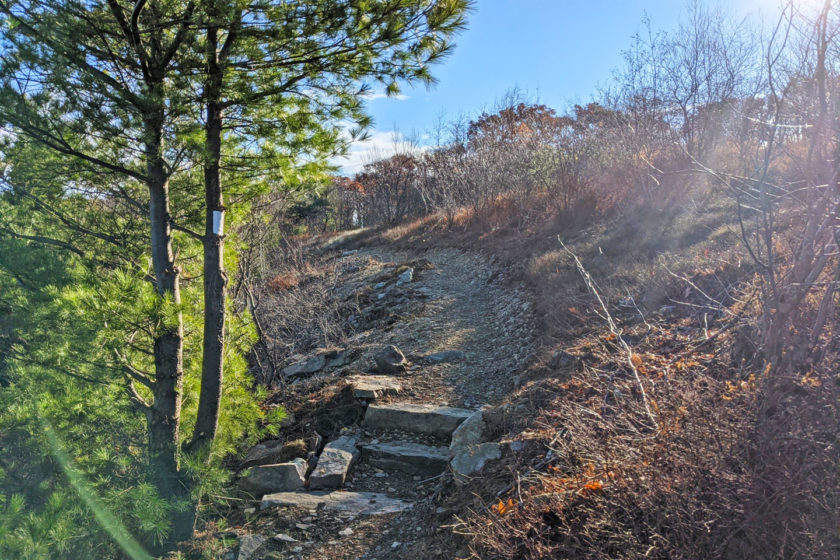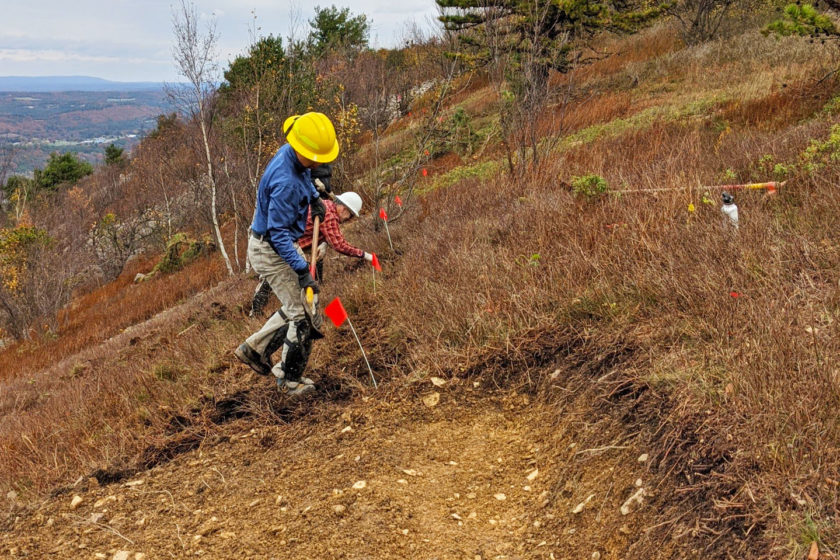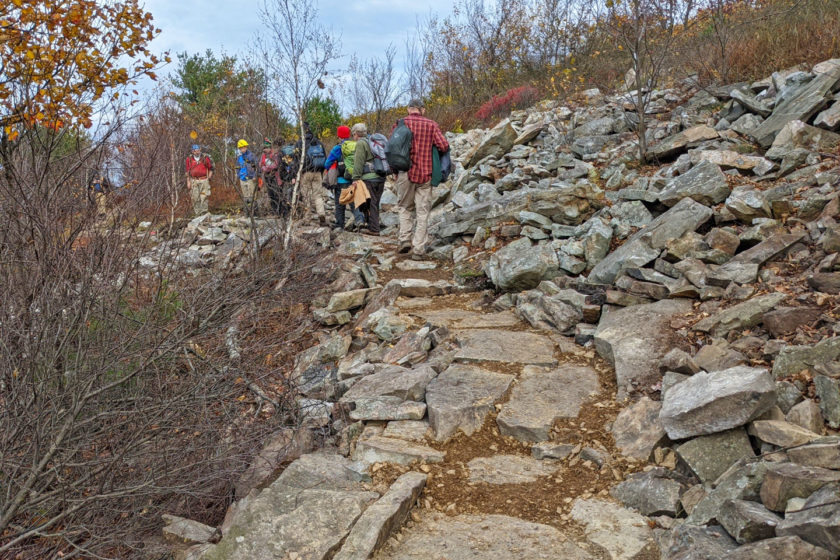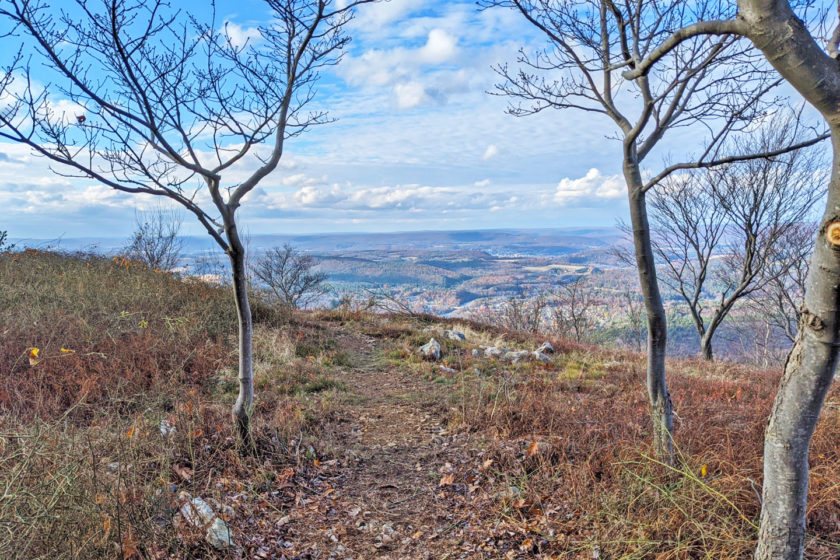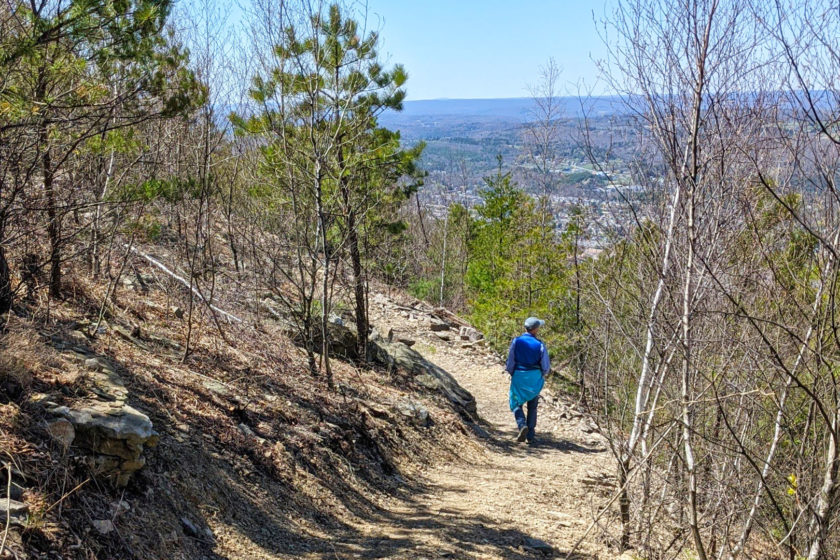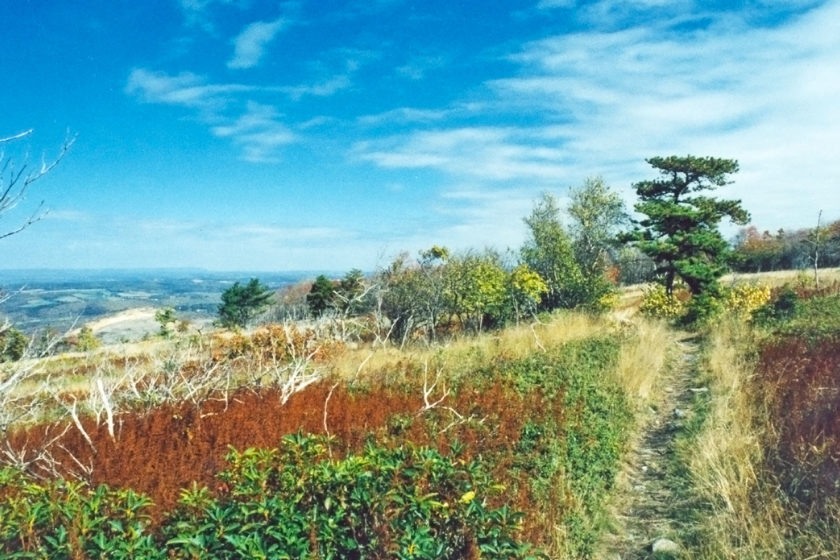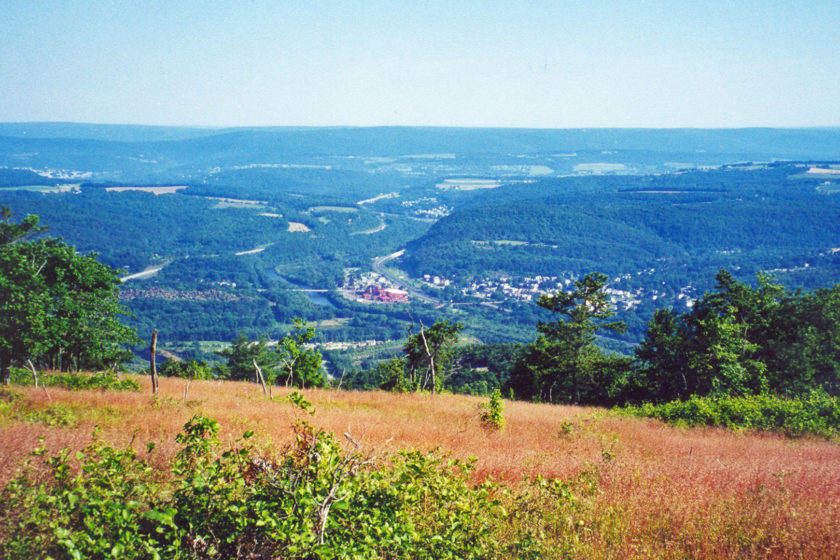By Kim O’Connell
The Invisible Beauty of Trail Design
September 23, 2022
On the Appalachian Trail (A.T.), hikers expect to see certain things along the way — stunning mountain vistas, dramatic rock formations, rustic shelters, and the leafy green tunnel of trees. Most of the Trail is a conduit to landscapes of magnificent natural beauty, often punctuated by picturesque bridges, farms, and other cultural features. The Trail hugs the ridge so closely that it’s easy to forget that the footpath is human-made — designed, cleared, constructed, and maintained to maximize its aesthetic qualities.
These behind-the-scenes efforts — from designing routes and planning out viewpoints, to creating footbridges or stone steps that complement the environment — are all part of the “invisible beauty” of Trail design. When walking along the footpath, hikers likely don’t think about what goes into making the Trail experience pleasurable and beautiful.
And that’s entirely intentional.
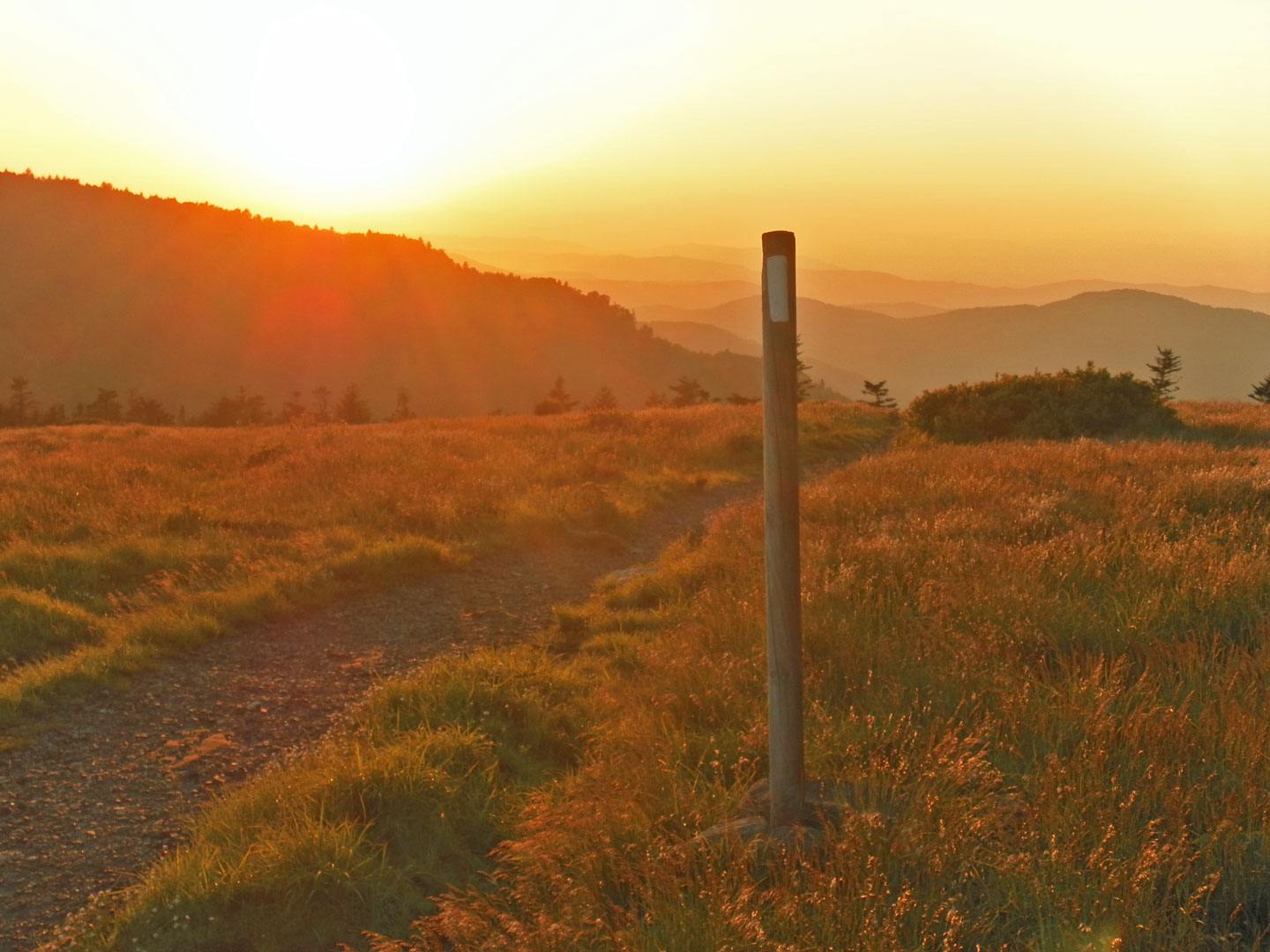
Effective trail design not only creates more sustainable footpath — it also attempts to minimize the impact of the trail itself on visitors’ ability to experience the natural beauty around them.
In laying out his vision for the Trail, Benton MacKaye knew that it would require the existence of undisturbed or “underdeveloped” wildlands, but it would also require planning and construction. The human hand would be essential to its creation and maintenance. “Here is a job for 40,000 souls,” MacKaye wrote in his 1921 article envisioning the A.T. “Already basic it can be made spectacular. Here is something to be dramatized.”
With oversight, training, and coordination provided by the ATC, 30 Trail Maintaining Clubs do the hard work of maintaining the A.T., often staffed by volunteer crews who are willing to wear hard hats, swing axes, move boulders, cut down invasive vegetation, and complete other tasks that keep the Trail clear and safe while also retaining its picturesque qualities. When called on to do so, these workers sometimes have to reroute the Trail to more optimal locations. This can involve orchestrating the route to preserve scenic vistas, or building infrastructure in a way that complements the natural scenery.
Preserving Key Overlooks
Where the A.T. skirts the town of Palmerton in eastern Pennsylvania, just north of Allentown near the Lehigh Gap, the Appalachian Trail Conservancy (ATC) is spearheading about 14 miles of ongoing Trail restoration, which will be built out over the next dozen years. The landscape is still recovering from the fallout from the nearby Palmerton Zinc Pile Site, a former zinc smelting operation, that had contaminated the ground for more than 80 years. Trees and plants are already growing back, and the landscape looks healthier than it did even five or 10 years ago. As part of the work, the Trail will be rerouted to areas of the ridgeline that are less likely to erode, thus ensuring further resilience of the Trail in the face of a changing climate and visitation pressures.
But just as important, the new route through Palmerton will be designed in a way that is most likely to preserve key overlooks, such as those that frame views of Lehigh Gap and the surrounding mountains, and to create other opportunities for hikers to experience beauty.
“We had a couple of meetings with stakeholders, the land managers, the Pennsylvania Game Commission, the National Park Service and Trail Clubs to talk about what would be the optimal location for the Trail through Palmerton,” says Bob Sickley, ATC’s regional manager from the Susquehanna River to the New York-Connecticut Line. “What came out of that was a plan for leaving the Trail in its existing location in some places, but in others moving it. One of the prime goals was to put it where views would remain as vegetation grew up, so that we wouldn’t just have another six miles of the green tunnel [where it hadn’t previously existed].”
Complementing Natural Scenery
Some 150 miles northward on the Trail, on the banks of the Hudson River, Trail managers took a different approach to preserving beauty. At Bear Mountain State Park in New York, the footpath had been routed right on the fall line of the ridge — in other words, the most direct downhill path. As hikers moved down it, so did water and dirt. According to Sickley, Trail managers had adjusted the route eight to ten times over the years, but it still basically hugged the fall line and always ended up the same way: eroded, ditched, and washed out.
Finally, Trail managers realized that creating a more sustainable route at Bear Mountain would require the construction of stone steps and a crib wall to discourage erosion. But here, too, was a chance to create intentional beauty by reusing local natural stone.
“The topography on Bear Mountain is steep slopes,” Sickley says. “It’s not very tall, but the slopes are pretty steep, which means that most of the rock or boulders that eroded out went straight downhill, so there was plenty of rock to choose from in the construction. It may not have been explicitly said to do that in the design documents, but certainly, in the implementation phase, we used local materials to build steps from the stone and create the retaining walls.”
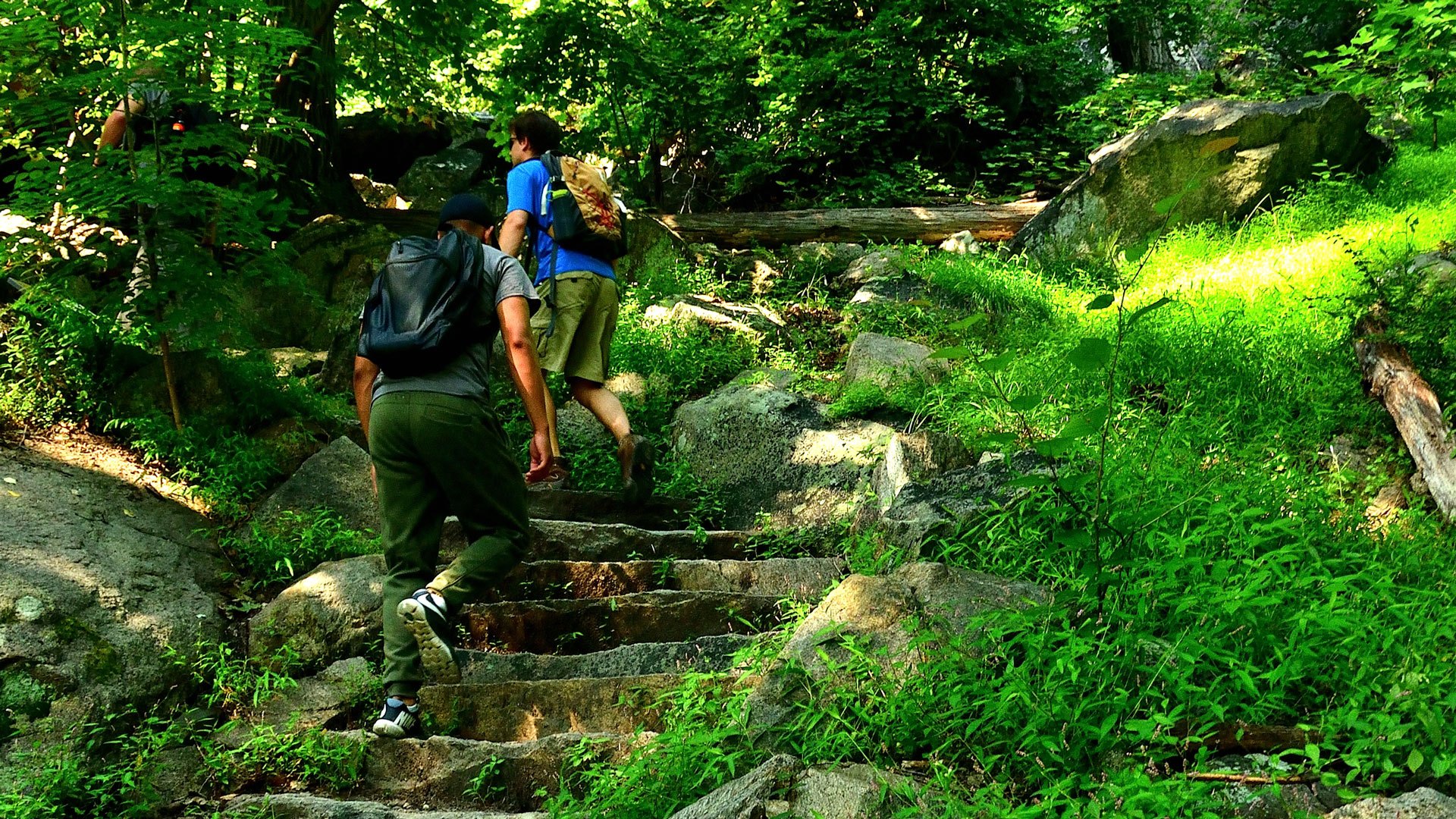
Hikers traverse the stone steps installed on the A.T. at Bear Mountain, New York.
Utilizing the native stone allowed crews to blend in the new construction with the landscape and help the infrastructure to feel as natural as possible for visitors. The Bear Mountain project took twelve years to complete, with over 1,300 granite steps installed into the side of the mountain.
Now that it is done, many hikers traverse these stable stone steps taking in the views and nature around them, unaware that teams of Trail volunteers and ATC staff members have been working behind the scenes — not just to preserve beauty, but to create it.
And for the Appalachian Trail, that’s the way it is meant to be.
 Kim O’Connell writes about science, history, conservation and sustainability for a range of national publications. She has served as a writer-in-residence at Acadia and Shenandoah National Parks and teaches in the Johns Hopkins University Master’s in Science Writing program. Learn more: kimaoconnell.com.
Kim O’Connell writes about science, history, conservation and sustainability for a range of national publications. She has served as a writer-in-residence at Acadia and Shenandoah National Parks and teaches in the Johns Hopkins University Master’s in Science Writing program. Learn more: kimaoconnell.com.
Discover More
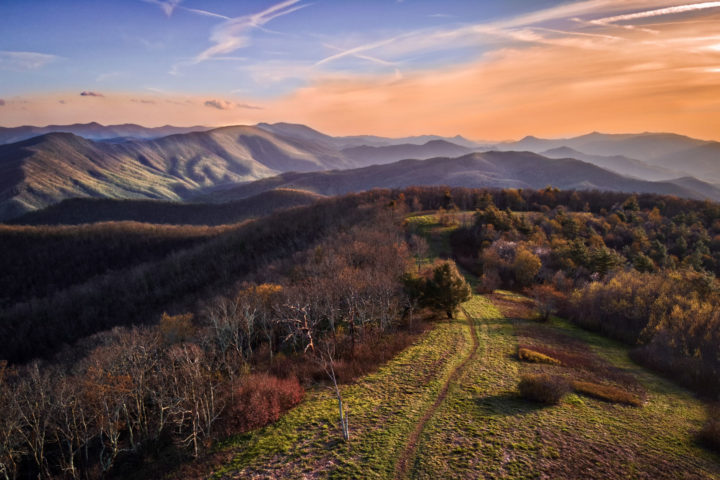
Official Blog
Not Merely a Trail
As Benton MacKaye discussed in his vision for the Appalachian Trail, we must prioritize conserving a realm of landscapes and experiences in addition to the footpath itself.
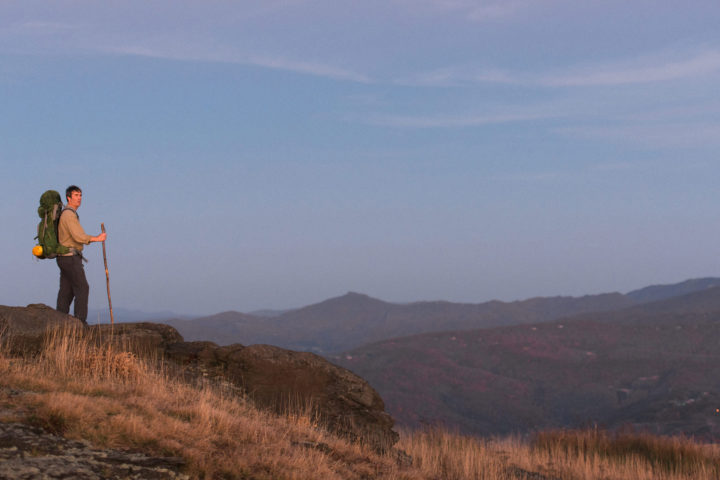
ATC's Official Blog
A.T. Footpath
Learn more about ATC's work and the community of dreamers and doers protecting and celebrating the Appalachian Trail.

JOIN OUR EFFORTS
Ways to Volunteer
Volunteers are the heart and soul of the Appalachian Trail, and there are many opportunities for you to give back to the Trail you love so much.






